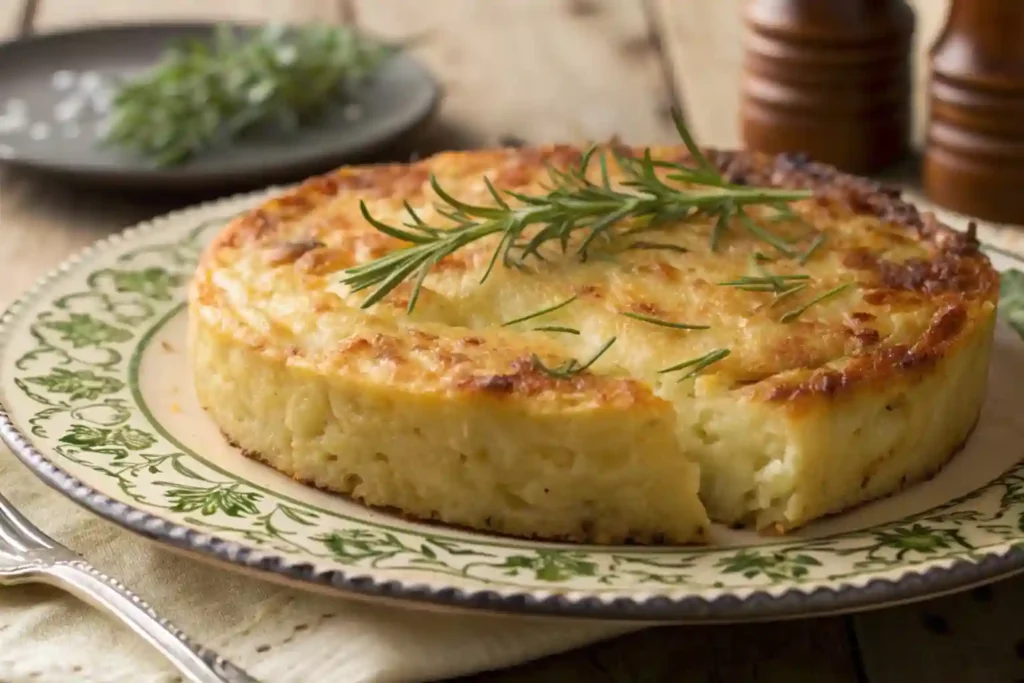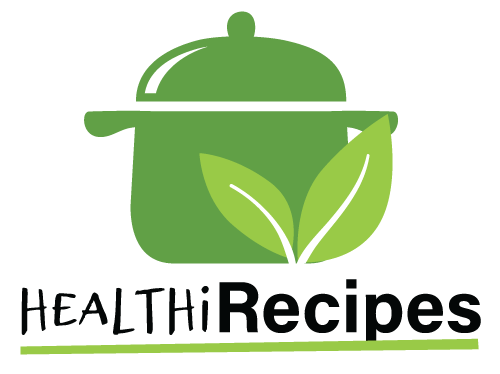
Table of contents
1. Introduction to Passover and Culinary Traditions
Passover, or Pesach, is one of the most significant holidays in the Jewish calendar, and many families enjoy traditional dishes like potato kugel during this time. This festival commemorates the Exodus of the Israelites from slavery in Egypt, symbolizing freedom and redemption. Rich in traditions, rituals, and culinary practices, Passover features a variety of foods that have been passed down through generations, including beloved potato dishes.
Significance of Passover
- Historical Context: Passover is celebrated in the spring, marking the beginning of the harvest season. It serves as a reminder of the hardships faced by the Jewish people and their ultimate liberation.
- Seder Plate: The Seder, a ceremonial dinner held on the first two nights of Passover, features a Seder plate containing symbolic foods, each representing different aspects of the Exodus story.
Traditional Foods Associated with Passover
During Passover, people traditionally consume certain foods while strictly avoiding others. The dietary laws, known as kashrut, dictate what individuals can eat during this time.
- Matzah: Unleavened bread that symbolizes the haste with which the Israelites left Egypt.
- Bitter Herbs: Representing the bitterness of slavery.
- Charoset: A sweet mixture of fruits and nuts symbolizing the mortar used by the Israelites in their forced labor.
Importance of Potato Dishes in Ashkenazi Cuisine
Among the various traditional foods, potato dishes hold a special place, particularly in Ashkenazi cuisine. Potatoes became a staple in Jewish cooking, especially in Eastern Europe, due to their versatility and availability.
- Culinary Adaptation: As Jewish communities migrated, they adapted local ingredients into their culinary practices. They embraced potatoes for their versatility in transforming into various dishes, including kugels and pies.
- Comfort Food: Many people consider potato dishes comfort food, as they evoke memories of family gatherings and festive meals.
2. The Role of Potatoes in Passover
Potatoes have become a beloved ingredient in many Passover recipes, particularly for those observing the holiday. Understanding their role during this time is essential for appreciating the culinary traditions associated with Passover.
Can Jews Eat Potatoes During Passover?
The question of whether Jews can eat potatoes during Passover often arises, especially among those new to the traditions.
Permissibility: Yes, you can generally eat potatoes during Passover. Moreover, they are not leavened and do not fall under the category of chametz, which includes any leavened products made from wheat, barley, rye, oats, or spelt.
Historical Context: In the late 16th century, people introduced potatoes to Europe, and as a result, they quickly became a staple food. Their introduction coincided with the migration of Jewish communities, which made potatoes a popular ingredient in Passover meals.
Nutritional Benefits of Potatoes
Potatoes are not only versatile but also nutritious, making them an excellent choice for Passover meals.
- Rich in Vitamins: Potatoes are a good source of vitamin C, vitamin B6, and potassium.
- High in Fiber: When consumed with the skin, potatoes provide dietary fiber, which is beneficial for digestive health.
- Energy Source: As a carbohydrate-rich food, potatoes provide a quick source of energy, making them ideal for festive meals.
Popular Potato Dishes During Passover
Several traditional potato dishes commonly appear during Passover, showcasing the ingredient’s versatility.
Potato Kugel: This baked dish combines grated potatoes, eggs, and onions, often seasoned with salt and pepper. You can serve it as a side dish or a main course.
Mashed Potatoes: Many families serve creamy mashed potatoes as a staple at Passover tables, often alongside roasted meats.
Potato Latkes: Although latkes made from grated potatoes are traditionally associated with Hanukkah, people also enjoy them during Passover, especially when served with applesauce or sour cream.
3. Understanding Potato Kugel
One of the most beloved potato dishes during Passover is potato kugel. This dish has a rich history and is a staple at many Seder tables.
What is Potato Kugel Made Of?
Potato kugel is a savory baked dish that is both simple and delicious. Its ingredients reflect the traditional values of Jewish cooking.
- Basic Ingredients:
- Potatoes: The star ingredient, usually grated or shredded.
- Eggs: Used to bind the mixture together and provide structure.
- Onions: Added for flavor, often sautéed before mixing.
- Seasonings: Salt, pepper, and sometimes herbs for added taste.
- Variations: Different families may have their own variations, incorporating ingredients like garlic, carrots, or even cheese, depending on their culinary traditions.
Cooking Methods and Preparation Tips
Preparing potato kugel can be straightforward, but there are some tips to ensure it turns out perfectly.
- Grating Potatoes: Use a food processor or box grater for even shreds. Soak the grated potatoes in water to remove excess starch, then drain well.
- Baking: Preheat the oven to a high temperature to achieve a crispy top. Some recipes recommend preheating the baking dish with oil to enhance crispiness.
- Serving: Potato kugel can be served hot or at room temperature, making it a versatile dish for any Passover meal.
The Cultural Significance of Kugel in Jewish Meals

Potato kugel is more than just a dish; it represents the blending of tradition and family heritage.
- Family Recipes: Many families have their own secret kugel recipes, passed down through generations, making it a cherished part of their culinary identity.
- Symbol of Togetherness: Serving potato kugel at the Seder table fosters a sense of community and connection among family members, reinforcing the importance of shared meals during Passover.
4. Potato Pie: A Passover Delight
Potato pie is a delightful dish that has gained popularity in Jewish culinary traditions, especially during Passover. This dish showcases the versatility of potatoes while offering a unique twist on traditional recipes.
Description of Passover Potato Pie and Its Ingredients
Potato pie is a savory pastry that typically features a flaky crust filled with a mixture of seasoned potatoes and other ingredients.
- Basic Ingredients:
- Potatoes: The primary filling, often mashed or grated.
- Onions: Sautéed onions add depth of flavor.
- Eggs: Used to bind the filling together.
- Spices: Common seasonings include salt, pepper, and sometimes herbs like dill or parsley.
- Crust Options:
- Traditional Dough: A simple dough made from flour and oil, suitable for Passover.
- Matzah Crust: For a gluten-free option, crushed matzah can be used to create a crust.
How Potato Pie Differs from Traditional Kugel
While both potato pie and potato kugel feature potatoes as the main ingredient, they differ in preparation and presentation.
- Texture:
- Potato Pie: Typically has a flaky crust and a soft filling, resembling a savory pie.
- Potato Kugel: Has a denser texture, often crispy on the outside and soft on the inside.
- Serving Style:
- Potato Pie: Often served as a main dish or side, cut into wedges.
- Potato Kugel: Usually served in squares or slices, often as a side dish.
Historical Origins of Potato Pie in Jewish Cuisine
The origins of potato pie can be traced back to Eastern European Jewish communities, where potatoes were a staple ingredient.
- Culinary Adaptation: As Jewish immigrants settled in various countries, they adapted local culinary practices, incorporating potatoes into their traditional dishes.
- Cultural Significance: Potato pie has become a symbol of comfort and home, often associated with family gatherings and festive meals.
5. Dietary Considerations for Passover
Understanding the dietary laws surrounding Passover is crucial for anyone preparing meals for the holiday. This section addresses common questions regarding the consumption of potato dishes.
Can You Eat Kugel on Passover?
Potato kugel is a popular dish during Passover, but its permissibility can depend on the ingredients used.
- Permissibility: Yes, kugel can be eaten during Passover as long as it is made with kosher-for-Passover ingredients.
- Variations: Some families may choose to make kugel with matzah meal instead of flour to adhere to Passover dietary laws.
Is Potato Starch OK for Passover?
Potato starch is a common ingredient in many Passover recipes, including kugel and potato pie.
- Usage: Cooks often use potato starch as a thickening agent or binder in recipes, making it a versatile ingredient for Passover cooking.
- Kosher Certification: You must ensure that the potato starch is labeled kosher for Passover, as some products may contain additives that are not permissible during the holiday.
Summary of Dietary Considerations
When preparing meals for Passover, it is vital to adhere to the dietary laws while still enjoying traditional dishes.
- Ingredient Awareness: Always check labels and make sure that all ingredients you use are kosher for Passover.
- Family Traditions: Many families follow their own customs regarding what they can eat during Passover, so it’s essential to respect those traditions while preparing meals.
6. The Cultural Impact of Potato Dishes in Jewish Communities

Potato dishes, particularly during Passover, have a profound cultural significance within Jewish communities. They not only serve as sustenance but also as a means of preserving heritage and fostering community bonds.
Family Gatherings and Traditions
- Shared Recipes: Many families cherish recipes for potato kugel and potato pie that they pass down through generations. These recipes often carry stories and memories, making them an integral part of family gatherings.
- Seder Celebrations: During the Seder, the festive meal that marks the beginning of Passover, families prominently feature potato dishes. These dishes symbolize the warmth of family and the importance of tradition.
Potato Dishes as Comfort Food
- Nostalgia: For many, potato kugel and potato pie evoke feelings of nostalgia, reminding them of childhood meals and family celebrations.
- Culinary Comfort: The hearty nature of these dishes provides comfort during the holiday, making them a staple on many tables.
The Evolution of Recipes
As Jewish communities have spread across the globe, the recipes for potato dishes have evolved, incorporating local ingredients and flavors.
- Fusion Cuisine: In modern times, chefs and home cooks alike experiment with traditional recipes, adding unique twists that reflect contemporary tastes while honoring tradition.
- Global Influence: The influence of various cultures has led to diverse interpretations of potato kugel and pie, showcasing the adaptability of Jewish cuisine.
7. Modern Takes on Traditional Potato Dishes
In recent years, there has been a resurgence of interest in traditional Jewish cooking, with many chefs and home cooks reimagining classic dishes.
Creative Variations of Potato Kugel
- Sweet Potato Kugel: A modern twist that incorporates sweet potatoes for a different flavor profile and added nutrition.
- Vegetable-Infused Kugel: Some recipes now include additional vegetables, such as zucchini or carrots, to enhance the dish’s nutritional value and flavor.
Innovative Potato Pie Recipes
- Herbed Potato Pie: Adding fresh herbs like rosemary or thyme can elevate the flavor of traditional potato pie, making it a gourmet dish.
- Cheesy Potato Pie: Incorporating cheese into the filling can create a rich and indulgent version of the classic dish, appealing to contemporary palates.
The Role of Social Media in Culinary Trends
- Recipe Sharing: Platforms like Instagram and Pinterest have made it easier for home cooks to share their interpretations of traditional dishes, inspiring others to try new variations.
- Culinary Communities: Online communities focused on Jewish cooking allow individuals to connect, share recipes, and celebrate their culinary heritage.
8. Conclusion and FAQs
In conclusion, the exploration of Passover potato pie and its significance in Jewish culinary traditions highlights the importance of food in cultural identity. As families gather to celebrate Passover, dishes like potato kugel and potato pie serve not only as sustenance but also as a means of preserving heritage and fostering community bonds.
The adaptability of these recipes, as seen in the evolution of traditional dishes, reflects the dynamic nature of culinary practices. For instance, the insights from the article on Is Indian Food Healthy? can provide a broader context on dietary choices during festive seasons. Additionally, the convenience of Healthy Choice Frozen Meals can resonate with those who seek to balance tradition with modern lifestyles. Finally, the creativity showcased in the Ultimate Brookie Recipe exemplifies how culinary innovation can coexist with cherished family recipes.
FAQs
- Can Jews eat potatoes during Passover?
- Yes, potatoes are generally permitted during Passover as they are not leavened.
- What is potato kugel made of?
- Potato kugel is made from grated potatoes, eggs, onions, and seasonings.
- Can you eat kugel on Passover?
- Yes, kugel can be eaten during Passover if made with kosher-for-Passover ingredients.
- Is potato starch OK for Passover?
- Yes, potato starch is acceptable for Passover as long as it is certified kosher for Passover.
